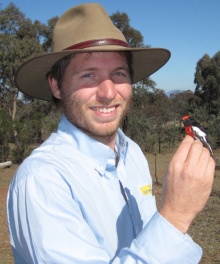Simple rules and complex consequences in animal societies

Damien Farine
Max Planck Institute of Animal Behaviour and University of Kontstanz, Germany
dfarine@orn.mpg.de
Sociality is widespread in the animal kingdom. However, to reap the benefits of social life, animal groups must overcome the challenges of maintaining cohesion, coordinating ac- tion, and making decisions about where to go and when. A major contribution of the study of large animal collectives has been to demonstrate that these challenges can be solved via simple local interaction rules, and thus do not require any global control. But are such insights universal? My research demonstrates that even in highly complex societies, such as those of baboons, groups move and behave in ways that are consistent with the sim- plest models of collective animal behaviour. It has also been suggested that living in such a complex society, where animals are familiar with conspecifics from both their own as well as other groups, requires advanced cognitive capacity. Using data from a recently- established population-level study of vulturine guineafowl, a mostly terrestrial and partic- ularly small-brained gamebird, I show that groups can form part of a complex social struc- ture that have previously been thought to only exist in large-brained mammals. However, while my work has provided extensive evidence that simple rules can underlie apparent complex social outcomes in nature, this does not mean that the consequences of social life are also simple. By combining large-scale studies of populations in the wild with con- trolled captive experiments, I also demonstrate that the consequences of social life can be profound and highly complex. Social structure can modulate how individuals interact with their environment, and thus how selection operates.
Recent publications:
1 Papageorgiou, D., Christensen, C., Gall, G. E., Klarevas-Irby, J. A., Nyaguthii, B., Couzin, I. D., & Farine, D. R. (2019). The multi- level society of a small-brained bird. Current Biology, 29(21), R1120-R1121.
2 Maldonado-Chaparro, A. A., Alarcón-Nieto, G., Klarevas-Irby, J. A., & Farine, D. R. (2018). Experimental disturbances reveal group-level costs of social instability. Proceedings of the Royal Society B, 285(1891), 20181577.
3 Farine, D. R., Strandburg-Peshkin, A., Couzin, I. D., Berger-Wolf, T. Y., & Crofoot, M. C. (2017). Individual variation in local inter- action rules can explain emergent patterns of spatial organization in wild baboons. Proceedings of the Royal Society B: Biological Sciences, 284(1853), 20162243.


